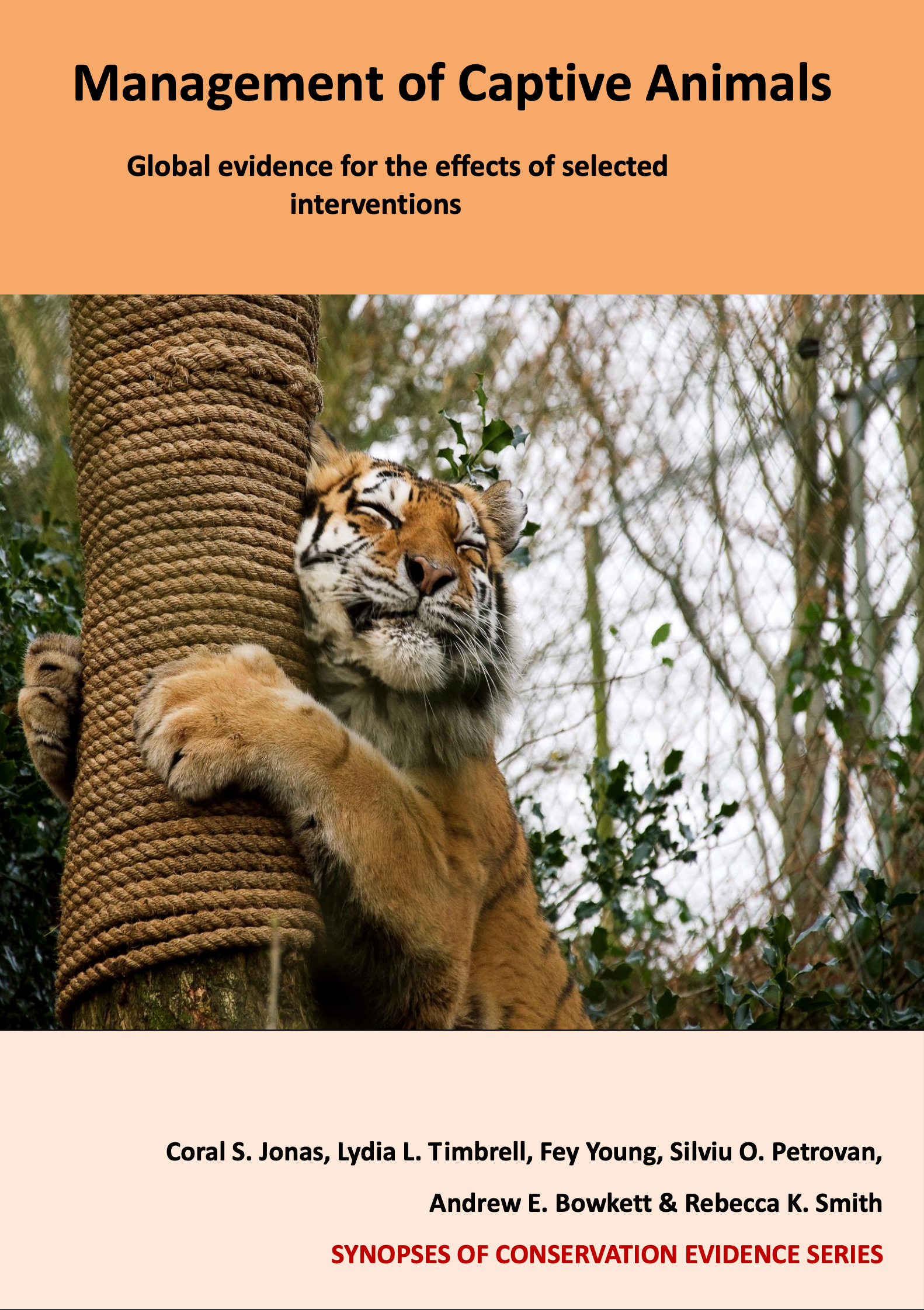Carnivores: Provide live vertebrate prey
-
Overall effectiveness category Unknown effectiveness (limited evidence)
-
Number of studies: 2
View assessment score
Hide assessment score
How is the evidence assessed?
-
Effectiveness
50% -
Certainty
30% -
Harms
0%
Study locations
Supporting evidence from individual studies
A small before-and-after study in 1991 of a fishing cat Felis viverrina in an off-exhibit zoo enclosure in the USA found that when provisioned with live fish, sleeping behaviour decreased and hunting behaviour increased compared to behaviour before the provision of live fish. Sleeping behaviour decreased (21%) and hunting behaviour increased (39%) when provisioned with live fish compared to before live fish were provided (sleeping: 67%, hunting: 0%). One fishing cat was observed for six non-consecutive days before the treatment followed by six non-consecutive days where one or two live fish were placed in pools in the enclosure. A second baseline period of six days followed this. The cat was fed its regular diet of processed meat daily between 08:30 h and 09:30 h. Observations began 30 minutes after the fishing cat re-entered the enclosure after the fish were released into the pools. Instantaneous focal sampling at 30 second intervals for 30 minute periods were recorded twice daily over a period of two months.
Study and other actions testedA small replicated, before-and-after study in 2003 of Sumatran tigers Panthera tigris sumatrae in a zoo in the USA found that when presented with live fish, there were no significant differences in the frequency of stereotypical behaviours compared to days without live fish. Two tigers were fed a commercial feline diet six days a week and were not fed on the seventh day, instead they received a horse leg bone. There were four conditions, each lasting four weeks: 1) baseline, 2) bones were supplied twice per week, 3) live fish were placed inside shallow water pools twice per week, and 4) post-manipulation baseline. Each tiger was observed for nine one-hour sessions in each condition using instantaneous scan sampling at one-minute intervals.
Study and other actions tested
Where has this evidence come from?
List of journals searched by synopsis
All the journals searched for all synopses
This Action forms part of the Action Synopsis:
Management of Captive Animals
Management of Captive Animals - Published 2018
Captive Animal Synopsis





)_2023.JPG)














